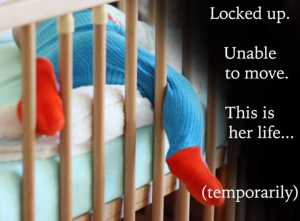Farmers, have you ever tried getting through to someone about livestock production only to have them put a wall up and not want to listen to what you have to say? Chances are, we have all been there at one time or another.
There is one thing that I think everyone can agree on, and that is: No matter if you choose to eat meat or not, we all want to make sure animals were raised with care and respect. I think that you’ll find after working in the industry, that’s actually a pretty true statement. Even if farms are bigger today than they used to be, our values as farmers have not changed. Assuming animals are “abused” in awful “factory farm” settings is like asking the owner of a car dealership to key their inventory. We don’t “key cars.” Our profits depend on animal welfare; their health is our livelihood!
There are certain organizations out there that like to paint a very ugly image of our industry, and that’s sad. We work hard and have a goal to provide a safe and healthy product that we raise with pride and eat ourselves. Sure there’s a bad apple in the bunch every now and again, (like any career) but as industry professionals, we certainly don’t want to see that! We hope that if someone is cruel to animals, they receive proper punishment. It is not acceptable, nor industry standard. But if it does happen, why does the camera continue to roll? How do they get those “hidden” camera angles like that? Why does that barn look unusually dreary? And what about the sad song? The goal of these organizations is to tug at your heartstrings right before asking for donations and tell you to go vegan. There is a lot of money behind these organizations (HSUS, PETA, etc.) who’s goal is total animal liberation, pets included. And they will stop at nothing to raise fear, raise money, go vegan.

There is nothing wrong with choosing to not eat meat of course, but don’t put that on the rest of us. There are 185 uses for a pig, from renewable energy to cement to paint, concrete, heart valves, book bindings, etc. Animals do so much more than feed us, and we all use animal byproducts every day and probably don’t even know it. My friend Wes raises millions of chickens every year for Perdue, and he says it best: Let’s see how we can turn an ordinary situation into something that sounds like torture:
“Every day, millions of humans are awoken by shrill electronic devices, hours before the sun comes up. Fighting weariness brought on by too little sleep, they trudge out to receive 8 to 16 ounces of a liquid stimulant that is a known carcinogen. These beautiful humans then enter closed metal devices, risking their lives hurtling along a blacktop ribbon regulated by rules kept in a book 499 pages long, at a speed of 5,500 feet per minute. They are hoarded into elevators, unable to move, and rushed into cubicles where they are forced to perform tasks they care little about … all while their children are ripped away from them and forced to be in the care of strangers they hardly know. After nine hours of this torture, with only a small respite to consume a high-calorie, low-nutrient meal, they enter the metal death device again … only to be forced to live this lifestyle every day.”
Sound awful? Great — now give me all your money! (Haha.)
Now let’s make one thing clear and go back to a previous point and agreement: no one wants to see animals suffering. The purpose of this article isn’t to glorify images of “factory farms” but rather, encourage critical thinking, get a second opinion, consider the source of the info, and be skeptical. Ninety-seven percent of farms are family owned, and I think you’ll find that by interacting with farmers, vets, meat inspectors, etc., you’ll find there may be a lot more care and love than you might think. Technology has played a major role in the ability to protect and care for more animals more efficiently while the human population continues to grow. Only 2 percent of the population of North America are farmers, yet we are required to feed everyone while keeping food affordable at the same time. There are computerized feeding systems, climate controlled environments, camera monitoring, pedicures, back scratchers, cushions, protection from predators and weather elements, some cows even get to lay in sand! Consider these facts the next time you see something “cruel” — you can ask the farmers or go visit these places for yourself! Don’t judge a farm by its cover; you may be pleasantly surprised once you look inside.



